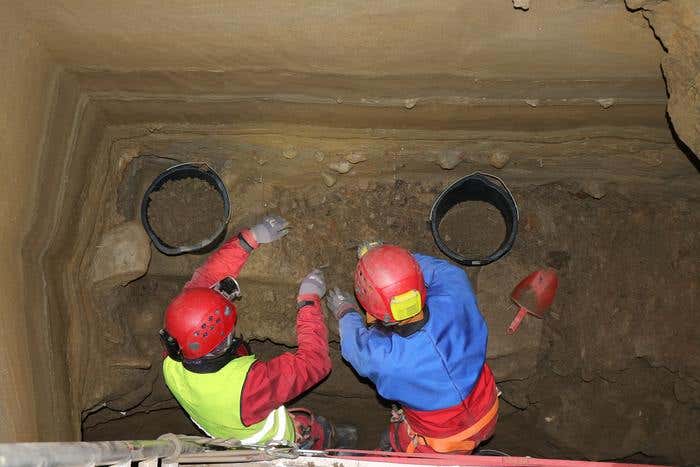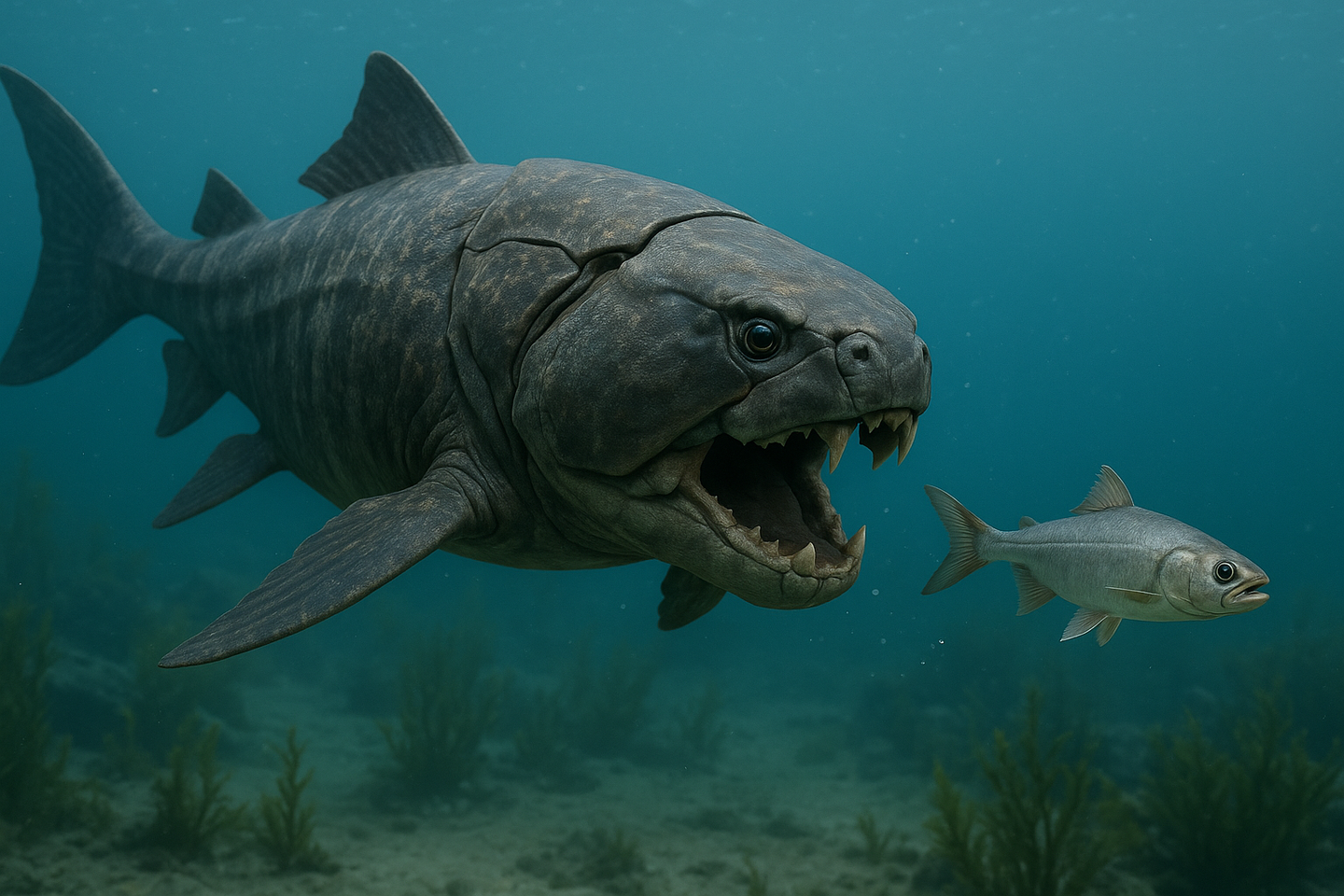Oldest preserved Arctic ecosystem discovered in Norwegian cave
A 75,000-year-old Arctic ecosystem found in a Norwegian cave offers clues to species survival—and loss—under shifting climate conditions.

Team excavators in cave. (CREDIT: Trond Klungseth Lødøen)
In a remote corner of Northern Norway, inside a dark coastal cave sealed off for millennia, scientists have opened a rare time capsule of life from 75,000 years ago. The bones and DNA traces of dozens of species—polar bears, walruses, whales, seabirds, fish, and even small rodents—lay hidden in sediment until modern excavations revealed them. Together, they tell the story of a thriving Arctic ecosystem that rose during a warm period of the last ice age, only to vanish when the climate swung cold again.
This isn’t just another archaeological find. It’s the oldest preserved faunal assemblage ever discovered in the European Arctic. And it’s offering modern researchers a clear, cautionary picture of how animals respond when the world’s climate changes fast.
The discovery, described in the journal Proceedings of the National Academy of Sciences (PNAS), comes from the Arne Qvamgrotta cave, a site so untouched that even the researchers seemed surprised by how well its contents had survived. As the study’s first author, Dr. Sam Walker of Bournemouth University and the University of Oslo, explains: “These discoveries provide a rare snapshot of a vanished Arctic world. They also underscore how vulnerable cold-adapted species can be under changing climate conditions, which can help us to understand their resilience and extinction risk in the present.”
A cave sealed in time
The cave’s story began in the 1990s, when a local mining project accidentally broke through a nearby mountain and exposed the entrance. For nearly three decades, it remained unexplored, its treasures hidden in darkness. Then, in 2021 and 2022, a research team mounted the first large-scale excavations.
What they found was startling. Deep layers of sediment held the bones of 46 animal species—mammals, fish, and birds—preserved far beyond the usual 10,000-year limit for remains in once-glaciated Arctic landscapes. This remarkable preservation allowed scientists to combine traditional osteology with ancient DNA analysis, building a detailed picture of a coastal ecosystem unlike the typical “Glacial megafauna” known from other ice age sites.
“This is the first time we’ve had such a complete look at Arctic life from this time period,” says senior author Professor Sanne Boessenkool of the University of Oslo. “The cave has now revealed a diverse mix of animals in a coastal ecosystem representing both the marine and the terrestrial environment.”
Related Stories
- 4 thousand-year-old sheep DNA reveals livestock’s role in spreading Bronze Age plague
- Ancient DNA reveals 2,500 years of human movement and change in the South Pacific
Life on a warmer Arctic coast
The bones paint a vivid picture of an Arctic that looked very different from today’s frozen seascapes. At the time, the coastal region of Northern Norway was largely ice-free after glaciers had retreated. Open tundra stretched inland, dotted with lakes and rivers. Seasonal sea ice drifted offshore, creating a shifting mosaic of habitats.
Here, reindeer migrated through snow-dusted plains. Bowhead whales swam in frigid but navigable waters. Walruses hauled out on rocky beaches, while harbour porpoises—creatures that avoid ice—slipped through ice-free channels. Seabirds such as Atlantic puffins, common eiders, and rock ptarmigans filled the skies.
Beneath the surface of freshwater lakes and streams, fish like Atlantic cod thrived. One particularly striking find was the collared lemming—a species now extinct in Europe and never before found in Scandinavia. Its bones add another piece to the puzzle of how Arctic species moved and adapted during climate swings.
Climate change and sudden loss
The scientists’ analysis revealed that most of the animal lineages found in the cave did not survive once the climate shifted back to colder conditions. When the ice returned, it sealed off much of the habitat that had supported them. “Although these animals colonised the region after the glaciers melted, they could not migrate to other suitable ecosystems when the ice returned,” explains Dr. Walker. The result was population collapse.
This vulnerability is deeply relevant today. The past event was a transition to colder conditions, but even then, cold-adapted species struggled. “And these are cold-adapted species—so if they struggled to cope with colder periods in the past, it will be even harder for these species to adapt to a warming climate,” Professor Boessenkool warns.
Dr. Walker adds another layer to the concern: “The habitats these animals live in today are much more fractured than 75,000 years ago, so it is even harder for animal populations to move and adapt.”
How scientists read the past in bones and DNA
Piecing together a 75,000-year-old ecosystem takes more than a sharp eye for fossils. The research team used a combination of osteology—the study of bones—and cutting-edge ancient DNA analysis to identify each species. This dual approach allowed them to confirm not only which animals lived in the region but also details about their genetic lineages.
These genetic clues revealed that many of the animals’ descendants no longer exist, showing how quickly biodiversity can vanish when climate pressures mount. It also confirmed that the faunal community was unusually diverse for such a high-latitude environment, reflecting the unique mix of ice-free land, seasonal sea ice, and open water.
Lessons for the present Arctic
This discovery of the oldest preserved Arctic ecosystem is more than a scientific milestone. It’s a warning. The Arctic is now warming nearly four times faster than the global average. Sea ice is shrinking, permafrost is thawing, and many of the same cold-adapted species that once thrived in Northern Norway are already struggling to cope.
While the ancient animals faced a shift to colder conditions, today’s wildlife must adapt to a rapid and sustained warming. This means loss of ice-dependent habitats, altered food webs, and more fragmented migration routes. The study’s authors stress that conservation efforts need to account for these limits to adaptability, especially for species that can’t easily relocate.
The lesson from Arne Qvamgrotta cave is clear: ecosystems that seem stable can unravel quickly when climate thresholds are crossed. Protecting habitat corridors, reducing other human pressures, and slowing climate change may be the only way to avoid repeating history.
Filling a gap in the Arctic record
Before this discovery, scientists had little direct evidence of Arctic life from more than 10,000 years ago in previously glaciated regions. The sedimentary record in such areas is often wiped clean by the advance and retreat of ice sheets. That’s what makes the Arne Qvamgrotta cave so exceptional—it escaped that erasure, preserving an entire community frozen in time.
By filling this gap, the find gives scientists a new baseline for understanding how Arctic biodiversity responds to long-term climate fluctuations. It’s a rare look at the interplay between marine and land ecosystems in the high north, and it offers new data for modeling future changes. As Dr. Walker sums up, “This has a direct link to the challenges [cold-adapted species] are facing in the Arctic today as the climate warms at a rapid pace.”
Note: The article above provided above by The Brighter Side of News.
Like these kind of feel good stories? Get The Brighter Side of News' newsletter.



